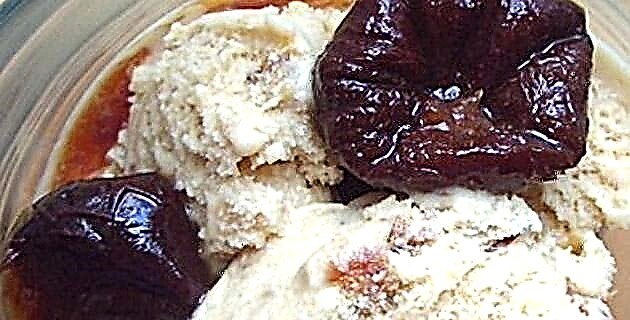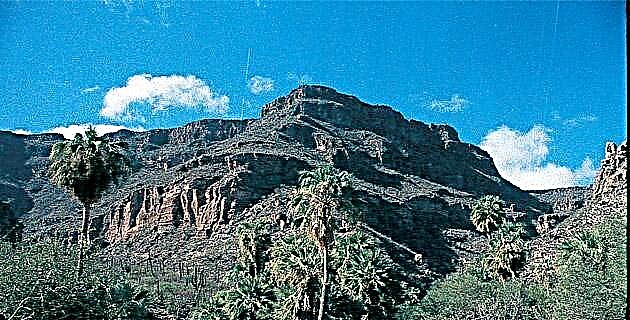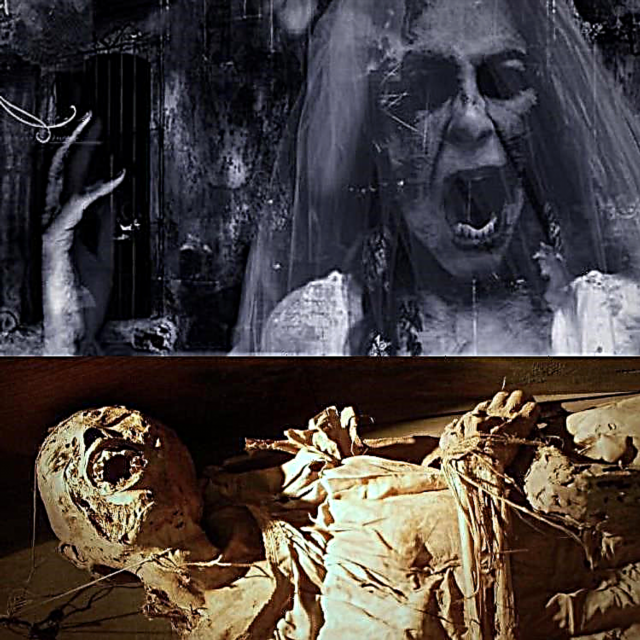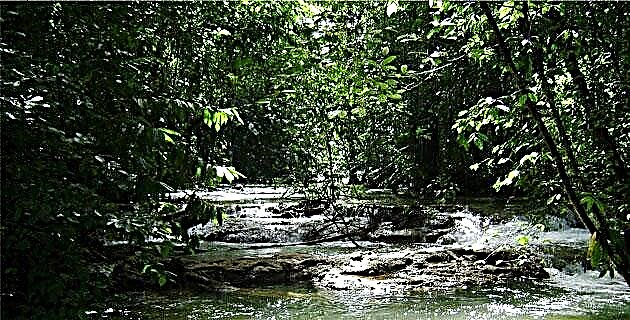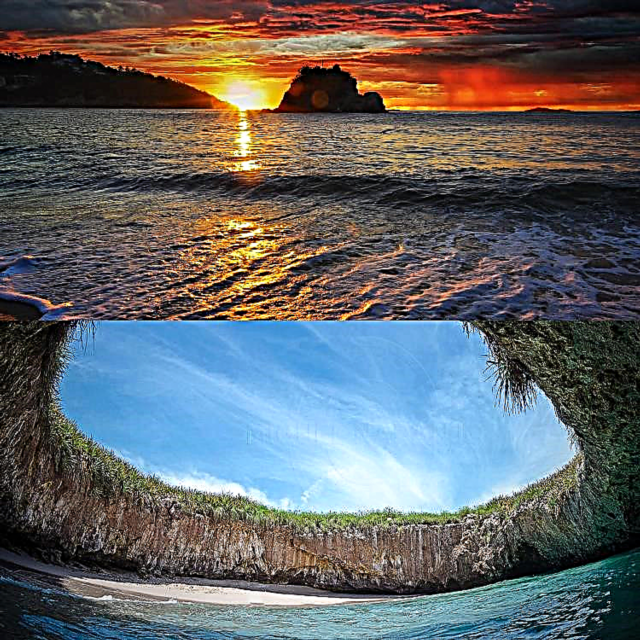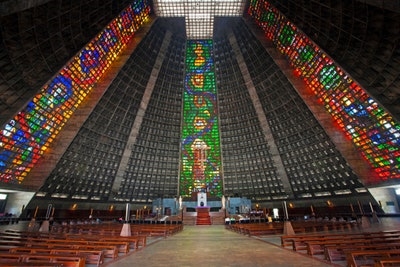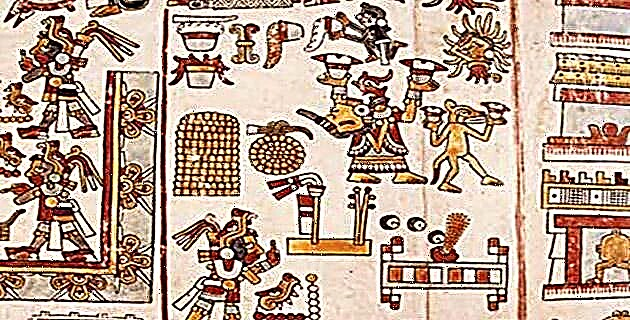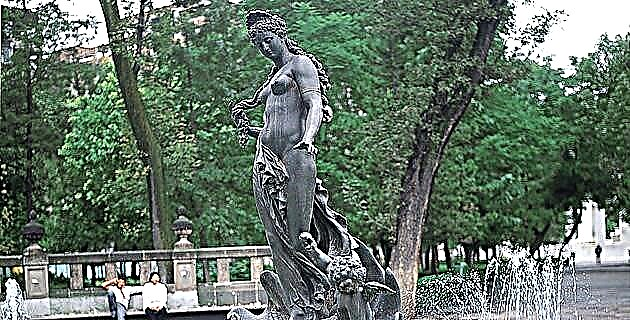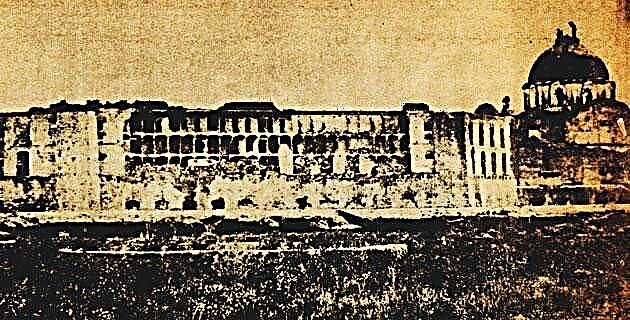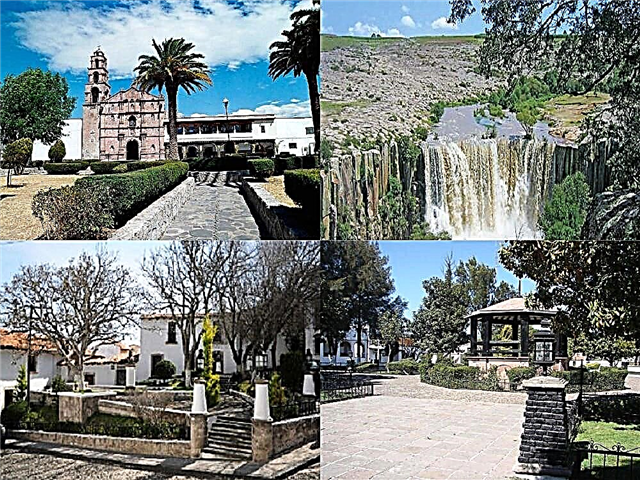In the Mexican highlands, with an excellent climate, the Mexican town of Aculco brings together splendid architecture, beautiful natural landscapes, attractive crafts and delicious food. We invite you to know Aculco with this complete guide.
1. Where is Aculco located?
Aculco de Espinoza, or just Aculco, is the small head city of the Mexica municipality of the same name, located in the mountainous highlands, in the extreme north of the state, bordering Querétaro. In the Mexican territory, it is surrounded by the municipalities of Polotitlán, Acambay, Timilpan and Jilotepec. Aculco is very close to several major cities. The trip from Mexico City is 136 km. by highway 57 towards Querétaro; at the height of km. 115 take the deviation that goes to Arroyo Zarco, finding Aculco 15 km away. of the crossing. Toluca is 110 km away. traveling on highway 55 in the direction of Querétaro and Santiago de Querétaro is 91 km away. towards San Juan del Río.
2. What are the main historical features of Aculco?
As with many pre-Hispanic Mexican names, there are several versions of the meaning of "Aculco". One version says that it is a Nahua term that means "In twisted water" while another indicates that the meaning is "Place where the water twists »In any case, there is no doubt that the name revolves around water, since in the Otomí language,« Aculco »means« Two waters ». Although the name that prevailed is Nahua, the pre-Hispanic settlement of Aculco was founded by the Otomi in the early 12th century. Later it was ruled by the Mexica and Aztecs until Moctezuma I conquered it for the Kingdom of Tlacopan. The conquerors arrived in 1540 and founded the original Hispanic town with the name of San Jerónimo. In Aculco, the independence forces led by Hidalgo lost their first important battle, on November 7, 1810. After independence, Aculco was elevated to a municipality and in 2015 it was incorporated into the Pueblos Mágicos system.
3. What is the local climate like?
Aculco is located 2,440 meters above sea level, enjoying a pleasant cool mountain climate between spring and autumn, with an average annual temperature of 13.2 ° C. In winter it is cold in Aculco, with the thermometer dropping a lot between December and February, reaching below zero degrees. Aculco rains 700mm a year, with a rainy season that runs from early April to October and even November. So it is prudent that you go to Aculco with an umbrella and that you do not lack warm clothes.
4. What are the main attractions of Aculco?
The Main Garden, with its beautiful kiosk, is the best starting point to explore Aculco. From there you have to go through the Parish and Ex-Convent of San Jerónimo, the Casa Hidalgo, the House of Culture, the Public Laundries, the Colorado Bridge and the Sanctuary of the Lord of Nenthé. Near Aculco there are places of ecological interest with buildings and ruins of historical importance, such as the Montaña, the Dam and the Hacienda Ñadó, the Tixhiñú and La Concepción Waterfalls, as well as the Hacienda Arroyo Zarco. In the vicinity of Aculco there are several towns of tourist interest, particularly for their religious architecture, such as San Lucas Totolmaloya, Santa Ana Matlavat and San Pedro Denhi. The people of Aculque have an excellent artisan tradition in stonework and in the production of milk-based products.
5. What's in the Main Garden?
The Aculco Main Garden is a beautiful wooded and landscaped space, dominated by a beautiful hexagonal-shaped kiosk with a red roof. The kiosk is in the Tuscan style and was built in 1899. In the shade of the trees there are several benches that provide a cool and quiet place for visitors to take a break before continuing their tours of the Magic Town. In front of the Main Garden are the most emblematic buildings of the historic center of Aculco, such as the San Jerónimo parish temple, the Municipal Presidency and the Portals, where there are shops where you can find the typical artisan products of the town.
6. What is the interest of the Sanctuary of the Lord of Nenthé?
The primitive chapel of Señor de Nenthé that had been erected in 1702, was demolished in 1943 after being destroyed in the late 1920s during the Cristero War. The new sanctuary was built in a modern architectural style. One of the legends surrounding the veneration of the Lord of Nenthé says that during a severe drought the chapel caught fire and the image of the "Lord of Water" was found intact in a place where a spring gushed out. Another legend indicates that the Holy Christ miraculously saved a soldier from the independence troops in 1810. In any case, when the rains are delayed, the peasants take out the image in procession, crying out for water.
7. What is the Parish and Ex-Convent of San Jerónimo like?
The conventual rooms of this group erected by the Franciscans date from the 1540s and the temple was built between 1764 and 1759. The facade of the parish is in the Tequitqui or tributary Baroque style, pictorial and sculptural art developed by the Mesoamerican natives on the constructions with Spanish architectural expression. Inside is a painting of Our Lady of Mount Carmel rescuing the souls from purgatory and a version of The Last Supper, made by the notable artist of the viceroyalty period, Miguel Cabrera. In the former convent there are oil paintings of San Antonio de Padua and San Juan Nepomuceno.
8. What is Casa Hidalgo?
It is a large two-story house located near the Municipal Presidency, with lowered arches on the ground floor and oval arches on the upper level. The house belonged to Mrs. Mariana Legorreta, sister-in-law of Insurgent José Rafael Marcelino Polo. It is called Casa Hidalgo because the Father of the Nation, Miguel Hidalgo y Costilla, spent the night there on the nights of November 5 and 6, 1810, on the eve of the disastrous Battle of Aculco, fought on the 7th, in which the forces Republicans were harshly defeated by the royalists. The house has undergone several renovations throughout its history, including the replacement of the corner portal with a new portal with square columns. Currently the facade is painted in bright colors.
9. Where is the House of Culture located?
The House of Culture of Aculco, which also houses the Municipal Historical Archive, is a building located on Calle Manuel del Mazo 4 in the center, which works in what was the Venustiano Carranza Primary School, in turn built on the site of the old Municipal Palace. It is a large single-storey house that is accessed from the same street pavement by a short staircase with 3 steps and on its facade there is a wide entrance door and several groups of 3 windows each, all these elements with very lowered arches. The House of Culture is the scene of artistic exhibitions and other cultural events.
10. What are Public Laundries?
Until not long ago, in towns with water shortages, public laundries were built for the residents to do their laundry; sites that now constitute picturesque testimonies of bygone eras. The Aculco public laundries were built in 1882, taking advantage of the Ojo de Agua spring, the main source of supply for the population. For more than 100 years there has been a legend in Aculco of some children who would have been found by a witch, taking them to a pirú tree located next to the laundries, whose trunk took the shape of embracing boys. It is even said that if the bark of the tree is punctured, a strange red substance comes out. You can try to check the history on your trip to Aculco.
11. What is the interest of Puente Colorado?
This bridge was part of the original access to the town, along the road that linked Aculco with the Arroyo Zarco farm and with the Camino Real de Tierra Adentro, and is located over the most important stream in the town. The construction is of masonry of the characteristic white stone of Aculco and has four slightly lowered arches. It owes its name to the fact that at the beginning of the 20th century it was painted red, although all that layer of paint has already disappeared. Another of Aculco's legends is that of a supposed carter who makes noises with his cart stuck under the bridge, but when someone comes down to help, the place is deserted.
12. What can I do in the Ñadó Mountain and Dam?
Near Aculco, covered by dense forest, is the Ñadó Mountain, which rises to more than 3,000 meters above sea level. In the mountain there is a rock that reaches 3,170 meters above sea level, which is frequented by enthusiasts of the sport of climbing. The waters of the Ñadó River, a current that integrates those of several streams that descend from the slopes of the nearby mountains, forms the Ñadó Dam, between the municipalities of Aculco and Acambray. In the dam and its surroundings you can practice sport fishing, horseback riding, camping and other entertainment.
13. What's at Hacienda Ñadó?
This farm that already existed in the 18th century according to records of the time, was an important producer of charcoal, which had a railroad to take the product to Santiago de Querétaro and other nearby cities and transport the materials and supplies required in The explotion. The Arroyo Zarco hacienda, a former strategic point for the exchange of goods and a resting place for well-known figures in Mexican history, was supplied with coal from Hacienda Ñadó. The estate of the hacienda, of which some constructions have survived, is now private property, it is located in a beautiful place bathed by the waters of the La Tinaja stream.
14. What is the importance of Hacienda Arroyo Zarco?
12 km. from the town of Aculco is the Arroyo Zarco ejido, where this hacienda of whose large house the ruins are preserved. Among the grass it is still possible to see the stones that formed the pavement of the Camino Real de Tierra Adentro, the legendary 2,560 km road. long that linked Mexico City with Santa Fe, United States. This Jesuit farm reached 30,000 hectares, preserving the vestiges of a mill from the denim factory that operated on the farm, as well as a chapel, which is the structure in the best condition. The hacienda was a stagecoach hotel and a place of rest or overnight stay for notable figures in Mexican history, such as Maximiliano de Habsburgo, Benito Juárez and Porfirio Díaz.
15. Where is the Tixhiñú Waterfall?
The Tixhiñú waterfall is formed by the current of the Ñadó River when it penetrates a basalt ravine with vertical walls about 30 meters high. The river forms a beautiful waterfall, much more spectacular in the rainy season, whose cold waters form a natural pool. The upper part of the waterfall can be reached by a paved path and to reach the lower part you have to go down a path with beautiful gallery vegetation. It is located about 7 kilometers west of Aculco.
16. What is La Concepción Waterfall like?
Access to this waterfall is located on the road between Aculco and Amealco, about 10 km. of the Magic Town. The waters of the stream that runs between a rocky landscape made up of basaltic stones, come from the nearby Ñadó Dam. The La Concepción waterfall can be appreciated in all its beauty in times of high water, with the waterfall forming a dense 25 meter high curtain. The rocky walls are suitable for the practice of adventure sports such as rappelling, and there are already more than one hundred routes for the descent. Many rappellers use the site for camping.
17. How attractive is San Lucas Totolmaloya?
This small community located 12 km. Aculco has a beautiful and simple white chapel with red trim, in which the evangelist who, according to Christian tradition, wrote the Acts of the Apostles is venerated. The small temple has a portal with a lowered arch, with the choir window above it and on one side a single, slender three-section bell tower. In the atrium is a robust atrial cross. Few Mexican towns already preserve the authentic celebration of the Day of the Dead with its vespers, dedicating October 31 to children who died prematurely before baptism and the first of November to the memory of dead children already baptized and at a young age. Although the Day of the Dead has also changed in San Lucas Totolmaloya, it is still a town with one of the most traditional celebrations.
18. What is there to see in Santa Ana Matlavat?
7 km. North of Aculco is Santa Ana Matlavat, one of the oldest towns in the state of Mexico. Its old chapel with an octagonal and crenellated apse dates from the 16th century and is located next to the new temple that began to be built more recently. The facade of the chapel is crowned by an interesting passionate cross, which has calendrical glyphs engraved similar to those of the Codex Mexicanus, the famous Mixtec pre-Hispanic document that is preserved in the National Library of Austria. For this reason, specialists have linked Santa Ana Matlavat with very old episodes in Mexican history.
19. What stands out in San Pedro Denhi?
Another town of interest in the municipality of Aculco is San Pedro Denxhi, located 25 km. from the municipal seat. As in colonial times, the town's main building continues to be its small church, declared a historic monument by the INAH, which has some particular characteristics that differentiate it from most of the other temples in the state of Mexico. Among these distinctions are the absence of a choir and the use of a very dark colored quarry to carve the decorations on the façade. Inside the chapel of San Pedro Denxhi there is an old monolithic baptismal font, as well as the main altar with images of San Pedro and two figures of Christ.
20. What are the main crafts of Aculco?
The artisans of Aculco are consummate workers of quarry stone, who since pre-Hispanic times and with more intensity since the viceroyalty, worked to raise the solid and magnificent buildings of its architectural landscape. Many people who are building or decorating a property go to Aculco to equip themselves with cobblestones, fountains, columns, railings, sculptures, crosses and other decorative and religious pieces. The popular craftsmen of the town also make beautiful and colorful embroideries of blankets, woolen fabrics, sarapes, blankets and shawls. With the fiber of maguey ixtle they make typical hats, indigenous clothing, ayates and other clothing.
21. What is gastronomy like?
The people of Aculco are great eaters of Mexican dishes and those of the border states, such as mole poblano, barbecue and carnitas. They also appreciate escamoles and in the Lenten season they eagerly search for the prized larvae. The dairy farming of the territory of the dairy basin in which Aculco is located has allowed the development of a tradition in the production of cheeses, butters, creams and other dairy products. You can buy these delicacies in their maximum freshness in the Portals and other places in the town, as well as the ham and other sweets that make up the typical local candy store, as well as the breads.
22. What are the main festivals of the Pueblo Mágico?
The patron saint festivities of San Jerónimo have as their culminating day on September 30, being a celebration that mixes customs and traditions of various times, with outstanding dances from Santiago de Cuba and shellfish. During the festivities the best agricultural handicrafts produced in the town are exhibited. September 17 is the Day of the Aculquense Fraternity, a festive date with more than 100 years of history, in which the people of the town gather to spend a day in the country, sharing food and drinks, and holding competitions among friends, such as horse racing at the El Carril site. Holy Week is celebrated in Aculco with all fervor and showiness, being the Lord of Nenthé the main protagonist.
23. Where can I stay in Aculco?
In San José Gunyo Poniente there is a nice and cozy hotel called Xani Mui, formerly called Rancho Equus. It is a refurbished hacienda house, with comfortable and well decorated rooms, and delicious cuisine. At km. 26 of the highway between Amealco de Bofil and San Juan del Río, is the La Muralla Mission, a hotel somewhat remote, but worth it for its heated pool, careful attention and exquisite food. In San Juan del Río, Amealco, Huichapan and Temascalcingo, towns located near Aculco, there are several recommended hotels, such as the San Juan Park Hotel, Hotel V, Hotel Amealco, La Casa Bix, Villas San Francisco and Hotel Plaza Venecia. Others are the Hotel Layseca, Hacienda La Venta and Rancho el 7.
24. What are the best restaurants?
El Rincón del Viejo offers Mexican food in its two-story house facing the main square. The portions are generous and the service is very fast, receiving good references for its cuts of flank steak and its wires. In Hidalgo 2 is La Orquídea, a restaurant also specialized in Mexican food, with good portions and affordable prices; the roast beef, the barbecue and the salads are excellent. Camino Real de las Carretas is located in Hidalgo 8 and they are very good hosts, with welcome tequila, music and delicious food. To block, on Avenida 6 de Febrero is Tacos El Pata.
Did you like our Aculco guide? We have prepared it especially for you, in order to provide you with all the necessary information for you to make an unforgettable trip to the Pueblo Mágico Mexica. In any case, if you consider that something has been missing, we will gladly attend to your observation. It only remains for us to ask you to write us a brief comment about this guide and about your experiences in Aculco. See you again very soon for another lovely walk through some wonderful place in the Mexican geography.

